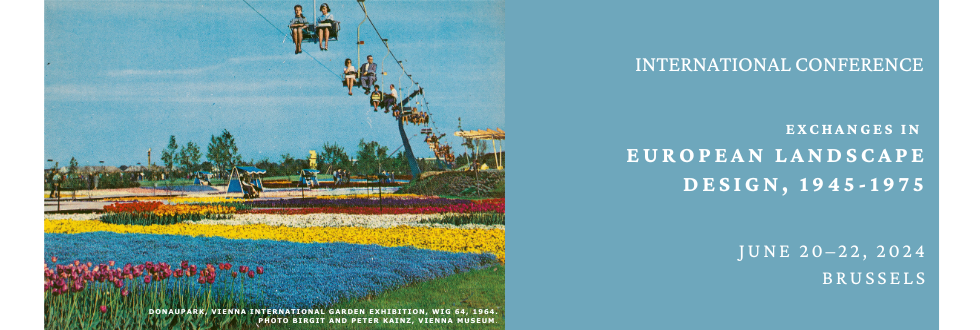
|
|
|
Abstracts > Eric Hennaut
Bruxelles au centre du monde: Les jardins de l’Exposition universelle de 1958 - Eric Hennaut (CIVA, Brussels) [in French]
L’Expo 58 de Bruxelles, première grande exposition universelle organisée après la Deuxième Guerre mondiale, place pendant quelques mois la Belgique au cœur de l’actualité internationale. Beaucoup de pays et d’institutions souhaitent montrer leur participation au nouveau monde qui se construit après le conflit.
René Pechère est responsable de la conception paysagère de la manifestation. Membre fondateur de l’IFLA, possédant une culture internationale surtout nourrie par la France et l’Allemagne, grand ami de Geoffrey Jellicoe et de Pietro Porcinai, il est la personne la plus adéquate en Belgique pour assumer cette fonction complexe. Quatre thèmes peuvent être pointés parmi ses interventions : la volonté de proposer une architecture du paysage qui fait écho à la modernité des pavillons, la mise en scène de l’histoire des jardins qui annonce son rôle fondamental dans la création du Comité international des jardins et des sites historiques ICOMOS-IFLA puis de la Charte de Florence, l’idée - rétrospectivement insolite - de jeter les bases d’une jardin congolais alors que la colonie belge deviendra indépendante deux ans plus tard, sa participation à l’aménagement du premier complexe nucléaire du continent européen en Belgique.
Parallèlement, divers pavillons étrangers présentent l’actualité des réflexions paysagères nationales, tel le pavillon du Brésil dont le jardin intérieur permet à des milliers de visiteurs de découvrir l’œuvre de Roberto Burle Marx.
Brussels at the center of the World: The gardens of 1958 Universal Exhibition
The Expo 58 in Brussels was the first major world exhibition held after the Second World War, and for a few months, it put Belgium at the centre of the international agenda. Many countries and institutions wanted to show their commitment into building the new world after the conflict.
René Pechère was responsible for the landscape design of the event. As a founding member of IFLA, with an international culture nourished mainly by France and Germany, and a great friend of Geoffrey Jellicoe and Pietro Porcinai, he is the most appropriate person in Belgium to take on this complex role. Four themes can be highlighted from his work: the desire to propose a landscape architecture that echoes the modernity of the pavilions; the staging of the history of gardens, which prefigures his fundamental role in the creation of the ICOMOS-IFLA International Committee for Gardens and Historic Sites, and then of the Florence Charter; the idea - in retrospect unusual - of laying the foundations for a Congolese garden at a time when the Belgian colony was to become independent two years later; and his participation in the development of the first nuclear facility on the European continent in Belgium.
At the same time, different foreign pavilions showcased the latest ideas in national landscapes, such as the Brazilian pavilion, whose interior garden gave thousands of visitors the chance to discover the work of Roberto Burle Marx.

